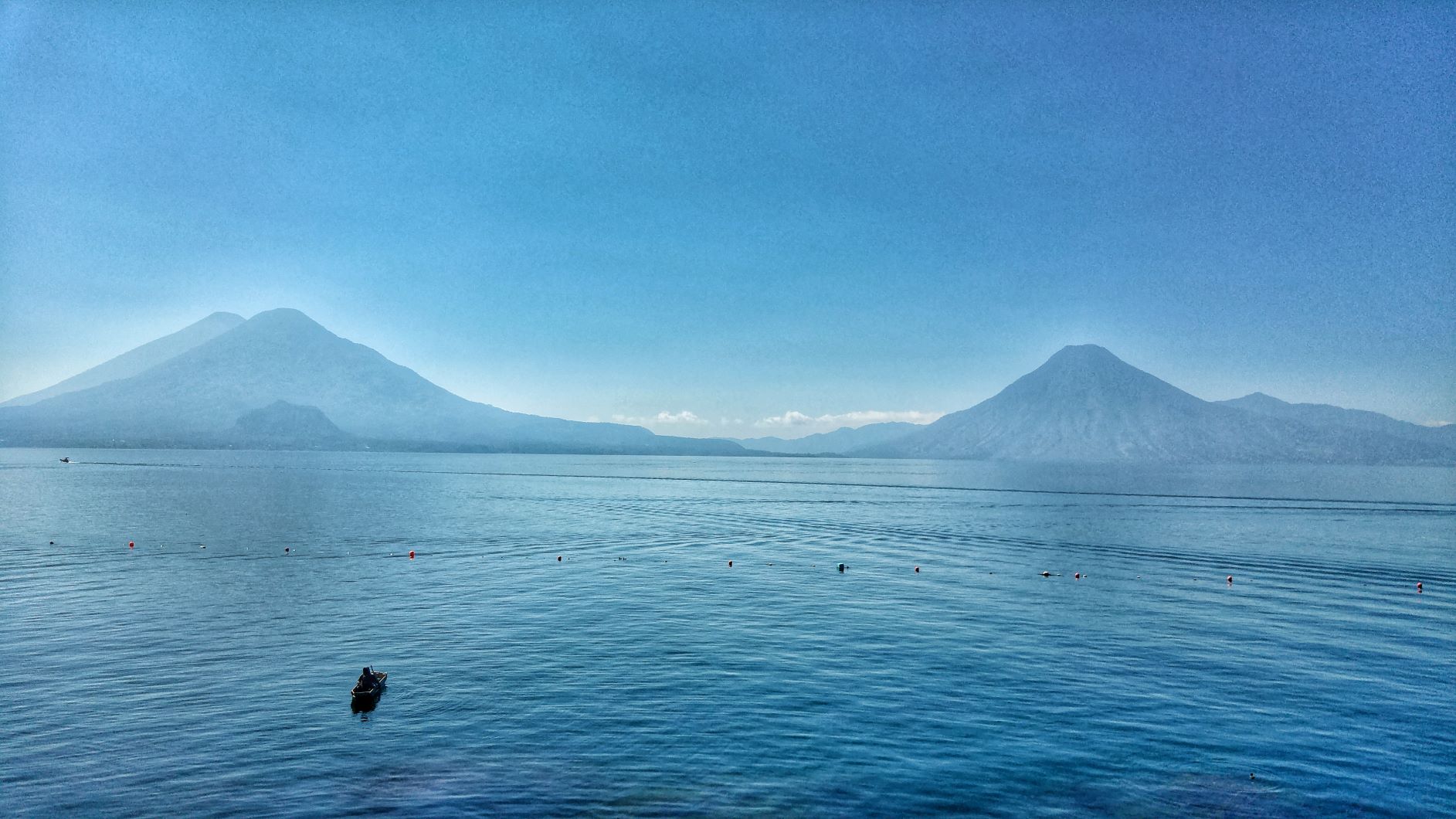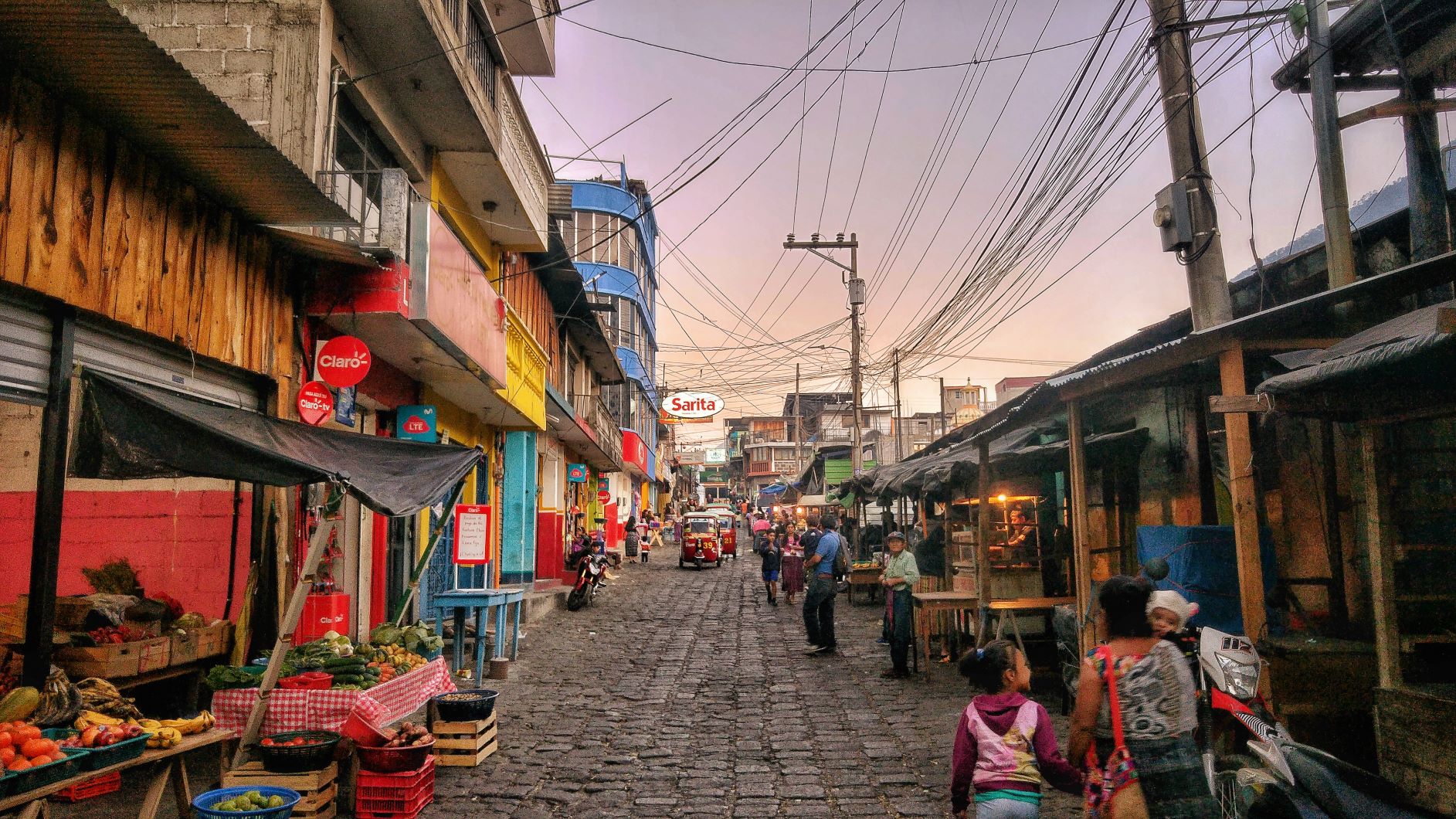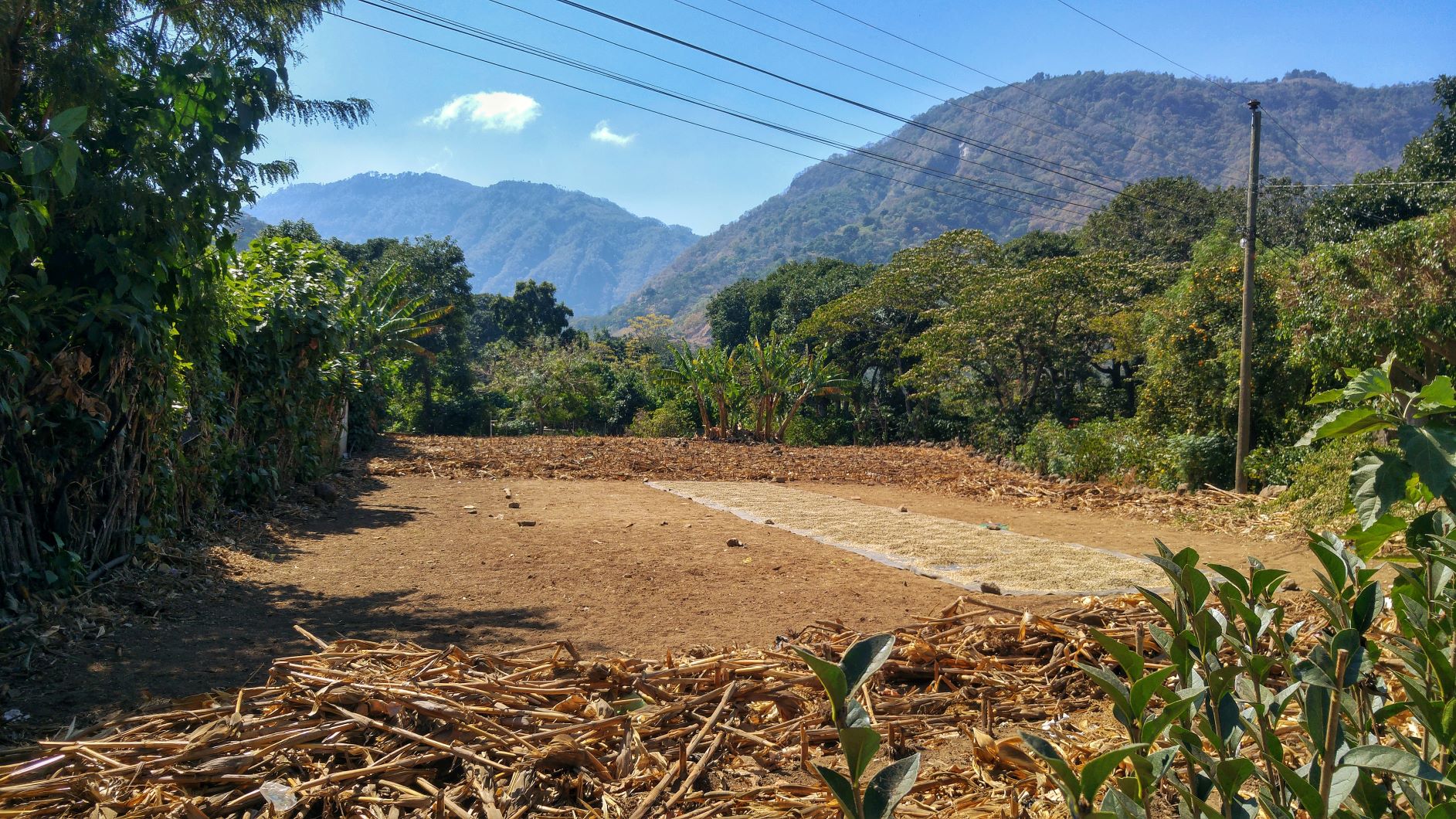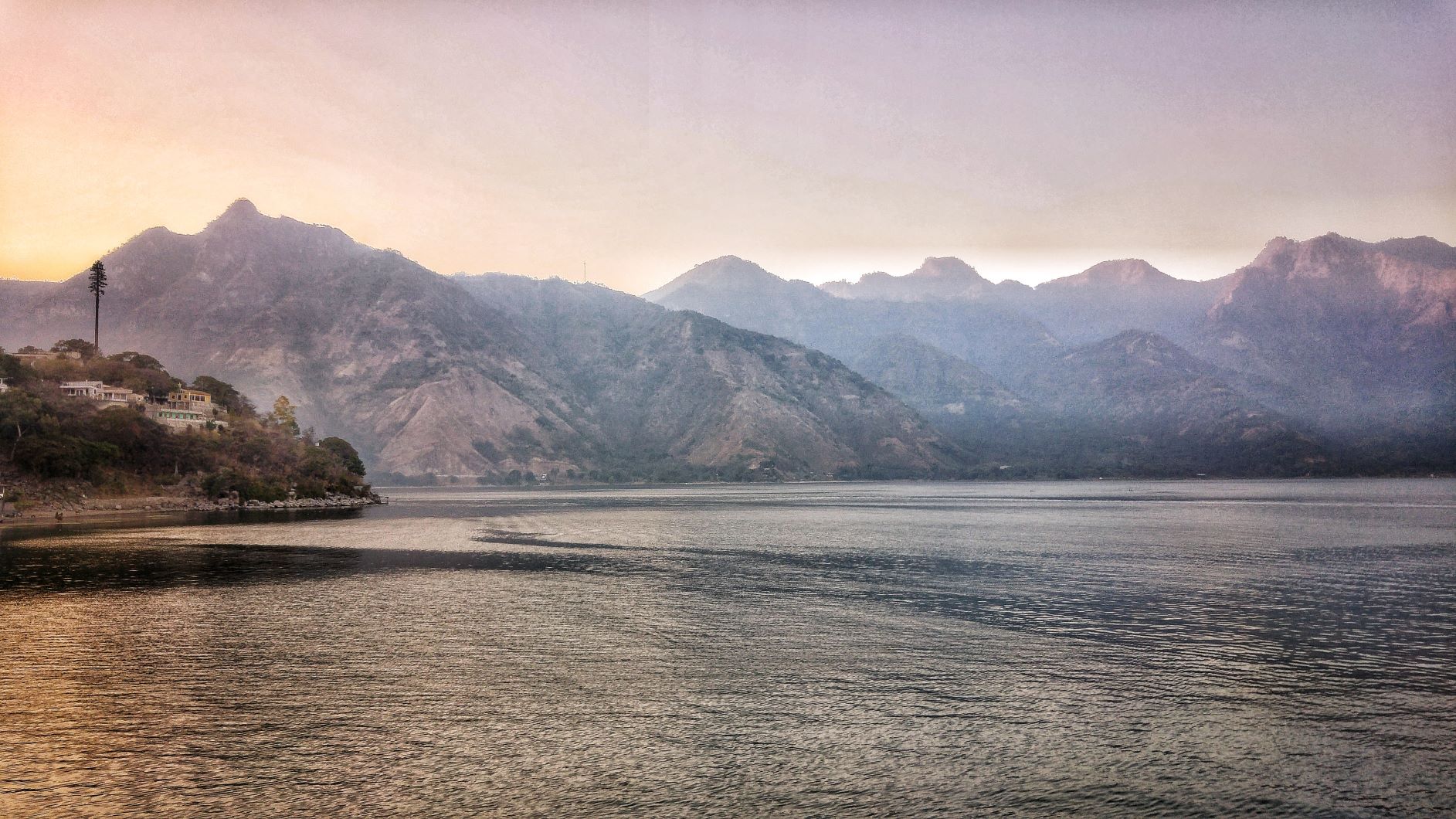All You Need to Know About Lake Atitlan in Guatemala
Lake Atitlan is truly beautiful and a gorgeous place to relax and experience Maya culture. People often come, but never leave.

It would be easy to stay at Lake Atitlan and miss a lot of the rich culture on offer. We spent some time here, so thought it was worth giving the lowdown on this mystical place.
1.8 million years ago, the Los Chocoyos eruption caused the caldera of a volcano to collapse. This formed Lake Atitlan as we know it today. Later eruptions caused the volcanoes that are now seen (and climbed) around the lake.
The lake is surrounded by many villages. Each one is unique and there’s surely something for everyone. To experience the diversity of Lake Atitlan, we believe it’s worth exploring as many as you can.
The villages of Lake Atitlan
Panajachel
This village is mainly populated by Cakchiquel Mayans. It is the most developed around the lake and the main tourist stop. Calle Santander is lined with art shops and restaurants. If you’re souvenir hunting or want a great painting for the wall back home, you’ll find it in ‘Pana’. It was also the first time we’d seen a supermarket in Guatemala. That might not sound surprising, but given how rural so many areas are, it gives an idea how ‘built up’ Pana is.

Pana has a nature park, a wonderful church built in 1567 and activities galore. You’ll be able to book tours for hiking, zip lining or nature reserves.
San Pedro
The village is mostly Tz’utujil and the place many people come to study Spanish for a few weeks. There’s so many schools for the enthusiastic student and you can even live with a local family whilst you do it. Courses are usually four to five hours of study per day and can be from one week to four. Shop around and find one that suits you.
San Pedro is a place of huge contrasts. Down near the docks there’s bustling night life. It’s rife with backpackers, restaurants and souvenirs. Walk up the steep hill in to town though and you’ll find the very best of what San Pedro has to offer.

There’s a colourful daily market which is not to be missed. Starting early morning and finishing by midday, Maya women are selling all kinds of food. Fruit, vegetables, meat, tacos, it’s all here. There’s also a beautiful church behind the market and a basketball court where school children constantly play. A great spot if you like to observe the locals and watch the world go by.
As an added bonus for your uphill efforts, the food prices are less than half what you pay at the bottom of the hill. If you’re on a budget, the steep walk is worth stretching your calves for.

San Juan
Our favourite of all the towns, as it’s not had too much development for tourists. San Juan is thriving with culture and a mecca for colourful weaving by the local Tz’utujil Maya women. There’s also weaving workshops if you want to try your hand at making a colourful garment.
All the locals were so happy and wanted to talk to us. We walked really far in to the town and loved every moment, soaking up the atmosphere.

San Pablo
Little seems to have been written about San Pablo. Perhaps because it isn’t accessible by boat, many people miss out on seeing it.
We were in a tuk tuk travelling through, but stopped for a while due to standstill traffic. Fortunately for us, it was during their annual carnival. There were fireworks in the street, colourful parades, costumes on every corner. The people of San Pablo had really gone all out for the occasion.

If you have time to get off the beaten track, this hilly village would be worth an afternoon of your travels.
San Marco
For the tourist, this is the most divisive village of all. Before coming to Lake Atitlan people would generally roll their eyes and say “oh god, San Marco”. This hippy hang out is either your heaven or a place you’ll want to skip.
Although a Tz’utujil and Cakchiquel village, we only saw a couple of locals. It’s mainly western hippies coming to align their chakras, play slow guitar, discuss the healing properties of stones, or get stoned off their face.

We had heard from a local in San Pedro that there are some genuinely good healing and yoga schools in San Marco. We were also informed that there’s some con artists taking advantage of those coming to search for enlightenment. Guess you have to go with your head when looking for such things.
On the boat across Lake Atitlan you’ll know whose going to San Marco. There seems to be a tie die, dreadlocks, bangles dress code. When someone got on the boat from San Marco to San Pedro their slurred stoned voice announced to no-one in particular: “These fibreglass boats are the tits man. They’re so sick”.
Indeed…
Santa Cruz
There’s few tourists here. Alighting from the boat you have a steep ascent. You turn the corner and it’s another steep ascent. You then turn a corner and…well you get the idea. It’s a beast of a climb to get in to Santa Cruz itself.
Yet at the top is a completely non tourist Maya town. There’s a Maya Women’s Weaving display, a cheese and wine tasting spot and little else. The main draw is the views of Lake Atitlan. If you’ve come all this way up, then you are justly rewarded.

Other villages at Lake Atitlan
There are many other villages surrounding Lake Atitlan. However, without having explored them, it wouldn’t be fair to pass comment. Santiago sounded particularly appealing though. Each year the Saint Maximón is paraded around the town and then kept by a caretaker host. If you ask around town, you’ll be able to track down Maximón and pay your respects.
So, could we have personally stayed in Lake Atitlan, never to leave? No. It’s beautiful and definitely worth seeing, but there’s an endless road calling us ahead.
The villages are worth exploring. If you get off the main tourist strips where boats dock, you can simply slide down an alley in to another world.
For the expats, it is a tranquil wind down from the rest of the world and to enjoy a relaxing life. Of all the backpackers we met, the main draw for many was the ability to get high by a beautiful lake and watch the world go by. That’s not our scene, but as we said at the start, Lake Atitlan appeals to everyone for different reasons. Just make sure you travel around and head up in to the hills to find the best of what Lake Atitlan has to offer.

How to travel around Lake Atitlan
Travelling around Lake Atitlan is incredibly easy. Each of the main villages has a dock. Head there and tell the captain where you want to go. Between early morning and 5PM there will always be a boat along soon.
Travelling from one side of the lake to the other (e.g. Pana to San Pedro) is only 30 minutes. Between villages it’s usually 10 – 15 minutes a time. The longest journey will cost you a maximum of Q25 ($3 USD). Shorter journeys will cost Q10 ($1.20 USD) – Q15 ($2 USD).
SHARE THIS POST